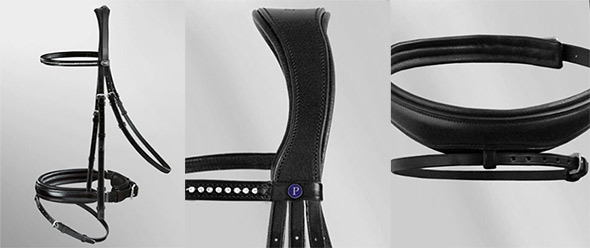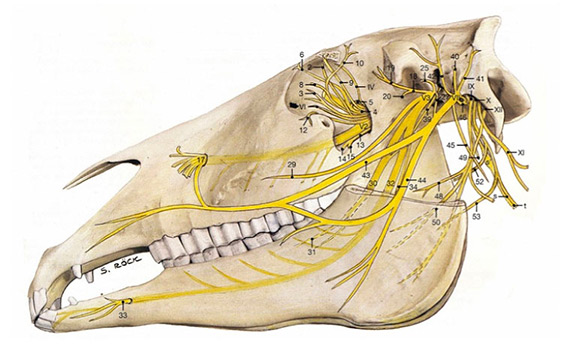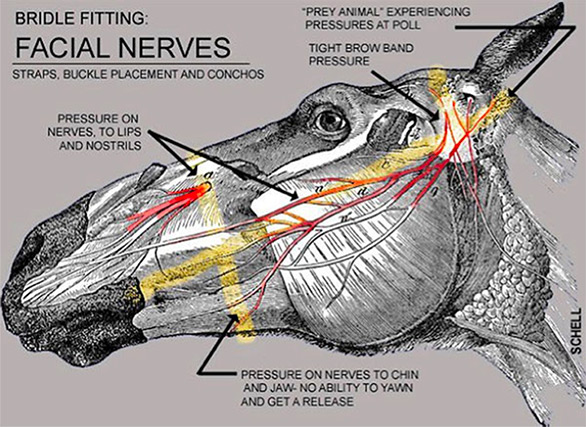Bridle Fitting 101
Even though you may know that your bridle has to fit your horse properly, you may be surprised to hear of the impact a poorly fitting bridle may have on your horse. Bridle fit can be considered just as important as saddle fit to maintain your horse’s comfort and optimum performance.
The question arises whether additional padding makes a difference in the comfort for your horse — especially padding under the noseband and headpieces. It has been shown that pressure actually increases for the horse with additional padding — especially at the headpiece, where this would be akin to wearing a riding helmet that is too tight (think of the headaches this causes!). However, additional padding at the noseband has a more positive result, although nowadays many manufacturers build the extra soft padding right into their bridles from the get go.
It is always best to try out several bridles on your horse, to determine what works best. Every horse is different, and you may find that a combination of pieces and sizes is the best solution. The key is to try a bridle for a couple of rides, since anything new may cause different behavior.
Anatomical Bridle
Anatomical bridles are designed to reduce or eliminate pressure on the sensitive poll, cheekbones, and facial nerves. We custom fit bridles with potentially differently sized noseband, headpiece, and cheek pieces to accommodate the individual horse.
The horse’s cheekbones are similarly bony and prominent, again with an abundance of sensitive nerves and minimal natural protection. The trigeminal nerve, which is the main sensory facial nerve, runs to the eyes and the upper and lower jaws and lips.
No other part of the anatomy has as many sensitive areas as the head. Recent design changes in bridles to become more ‘anatomically friendly’ are crucial in ensuring your horse is comfortable with his headgear. There are many nerves in the horse’s head. Some of them originate at exactly those areas where the noseband or flash lie. The yellow lines show all the nerves in a horse’s head
THE POLL
The horse’s poll contains a lot of nerves and blood vessels and is the connection to the atlas vertebra, the first cervical vertebra. What the poll doesn’t contain is a lot of natural padding. A bridle with a shaped headpiece that is fairly wide across the top of the poll but shaped around the ears will distribute the pressure over a wider area.
THE EARS
The ears, with about a dozen muscles that enable the to swivel and move in many directions, are positioned on either side of the poll. Behind the ears is the pressure-sensitive nuchal ligament, which plays a role in supporting the horse’s head.
Just as you cannot transform an ill-fitting saddle into perfection with pads alone, no amount of padding will compensate for a bridle that fits poorly. On the other hand you can take the existing bridle, which can be perfectly fine if adjusted properly.



